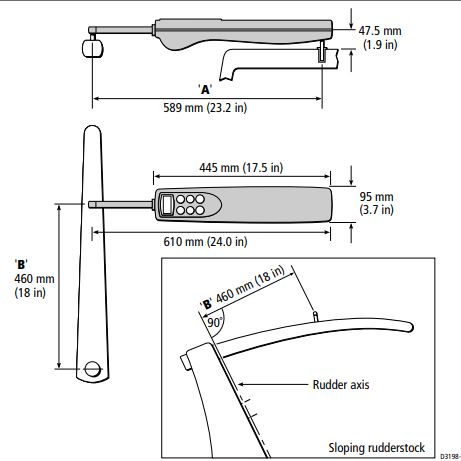2023-04-08, 03:10 PM
Hello everyone,
For quite a long time already I've been wanting to get my own autopilot using pypilot. Several things have been pushing me back (like money, time, overall knowlegde), but now I think I'm ready for it, except that I don't know how to choose a linear actuator.
I know this is quite a wide topic, so i'll try to narrow it down as much as I can. This is my boat: https://sailboatdata.com/sailboat/puma-29/?units=metric . As you can see it displaces 3,368kg and is almost 9m length. I currently have installed an Autohelm ST2000, which is basically the same design as new Raymarine S2000: https://www.raymarine.com/es-es/download...ve-manuals
As advised by @seandepagnier, I require something rather powerful to be able to use it in heavy weather conditions. I also read a couple of times this thread https://forum.openmarine.net/showthread....r+actuator so I know there's plenty of options in AliExpress, Amazon, etc...
I know too that I will need to purchase a motor controller (hopefully the small one) from @seandepagnier's store: https://pypilot.org/opencart/index.php?r...ry&path=59 (I don't even consider buying that anywhere else, because of trust, and the "opensourcefullness" of his job).
Also, this is a couple pictures from ST2000 manual so you can see how it is mounted. It's mandatory for me that I can keep using this autopilot in case pypilot fails, so it would be great if I can reuse the mounting socket and the tiller pin somehow.


That being said, I don't know where to start choosing the linear actuator.
1) How many Kg/N (N stands for Newtons?) does it need to push?
2) How do I measure what stroke lenght do I need?
3) What speed show i have?
4) What am I missing?
I like this type of actuators because they are alreadyy waterproof, so I don't need to sew a canvas bag, but that is NOT my primary concern at all, is just an idea where I started.
For quite a long time already I've been wanting to get my own autopilot using pypilot. Several things have been pushing me back (like money, time, overall knowlegde), but now I think I'm ready for it, except that I don't know how to choose a linear actuator.
I know this is quite a wide topic, so i'll try to narrow it down as much as I can. This is my boat: https://sailboatdata.com/sailboat/puma-29/?units=metric . As you can see it displaces 3,368kg and is almost 9m length. I currently have installed an Autohelm ST2000, which is basically the same design as new Raymarine S2000: https://www.raymarine.com/es-es/download...ve-manuals
As advised by @seandepagnier, I require something rather powerful to be able to use it in heavy weather conditions. I also read a couple of times this thread https://forum.openmarine.net/showthread....r+actuator so I know there's plenty of options in AliExpress, Amazon, etc...
I know too that I will need to purchase a motor controller (hopefully the small one) from @seandepagnier's store: https://pypilot.org/opencart/index.php?r...ry&path=59 (I don't even consider buying that anywhere else, because of trust, and the "opensourcefullness" of his job).
Also, this is a couple pictures from ST2000 manual so you can see how it is mounted. It's mandatory for me that I can keep using this autopilot in case pypilot fails, so it would be great if I can reuse the mounting socket and the tiller pin somehow.
That being said, I don't know where to start choosing the linear actuator.
1) How many Kg/N (N stands for Newtons?) does it need to push?
2) How do I measure what stroke lenght do I need?
3) What speed show i have?
4) What am I missing?
I like this type of actuators because they are alreadyy waterproof, so I don't need to sew a canvas bag, but that is NOT my primary concern at all, is just an idea where I started.





